No products in the cart.
Sale
HYNIC-iPSMA | CAS No. 2192215-74-8
Original price was: $26.00.$24.00Current price is: $24.00.
HYNIC-iPSMA (CAS No. 2192215-74-8) is a molecular imaging ligand designed for PSMA-targeted tumor visualization. Comprising 6-hydrazinonicotinamide (HYNIC) and a prostate-specific membrane antigen inhibitor (iPSMA), it supports PET and SPECT radiopharmaceutical research applications.
Description
Product Description
HYNIC-iPSMA is an advanced ligand for molecular imaging of tumors, designed for high specificity and sensitivity in targeting prostate-specific membrane antigen (PSMA). This compound consists of two essential components: HYNIC (6-hydrazinonicotinamide) and iPSMA (Inhibitor of PSMA). Together, they form a dual-functional system capable of binding to PSMA-expressing tissues and enabling radiolabeling with diagnostic isotopes.
The Role of HYNIC
HYNIC functions as a versatile chelating agent, allowing attachment of radiometals such as technetium-99m (99mTc) or gallium-68 (68Ga). By acting as a bifunctional linker, HYNIC provides a stable connection between the imaging isotope and the PSMA-targeting ligand. This ensures radiotracers maintain both biological activity and stability in vivo, a crucial factor for imaging reproducibility and clarity.
The Role of iPSMA
The iPSMA moiety is a highly specific inhibitor of PSMA, a membrane glycoprotein overexpressed in prostate cancer and other tumor vasculatures. By binding directly to PSMA, the ligand selectively accumulates in tumor tissues, allowing radiolabeled versions of HYNIC-iPSMA to serve as powerful imaging tools for prostate cancer detection and monitoring.
Imaging Applications
PET Imaging (68Ga-iPSMA): Enables high-resolution detection of prostate cancer lesions.
SPECT Imaging (99mTc-EDDA/HYNIC-iPSMA): Provides excellent sensitivity, cost-effectiveness, and broad accessibility.
Radionuclide-Drug Conjugates (RDCs): Serves as a research precursor for developing targeted theranostic compounds that combine diagnostic and therapeutic potential.
The ability of HYNIC-iPSMA to precisely target PSMA and be flexibly labeled with multiple isotopes makes it a critical tool in oncology imaging research, particularly for prostate cancer and related tumor studies.
Product Specifications
CAS Number: 2192215-74-8
Product Name: HYNIC-iPSMA
Synonyms: HYNIC-PSMA inhibitor conjugate, PSMA-targeted HYNIC ligand
Molecular Formula: C___H___N___O___ (exact formula available upon request)
Molecular Weight: Available upon request
Components:
HYNIC (6-hydrazinonicotinamide) – radiolabeling moiety
iPSMA – prostate-specific membrane antigen inhibitor
Appearance: White to off-white solid (research grade)
Purity: ≥ 98% (HPLC)
Solubility: Soluble in DMSO, ethanol; limited aqueous solubility
Storage: Store at -20°C, protected from light and moisture
Stability: Stable for extended periods under recommended storage conditions
Applications: Research use only; not for human or veterinary use
Extended Technical Overview
The specifications of HYNIC-iPSMA highlight its modular design. With a radiolabel-ready chelating group (HYNIC) and a biologically validated targeting domain (iPSMA), it serves as a flexible precursor for radiopharmaceutical development. Depending on isotope selection, researchers can design tracers for high-resolution PET or cost-effective SPECT imaging.
In preclinical setups, radiolabeled HYNIC-iPSMA demonstrates:
High tumor-to-background contrast ratios.
Strong binding affinity for PSMA-positive cell lines.
Stability under physiological conditions, ensuring reliable imaging data.
Mechanism of Action & Research Applications
Mechanism of Action
Target Recognition: The iPSMA component selectively binds to prostate-specific membrane antigen.
Radiolabeling: The HYNIC group chelates diagnostic isotopes such as 99mTc or 68Ga.
Tumor Localization: Radiolabeled HYNIC-iPSMA accumulates in PSMA-expressing tumors.
Imaging Output: PET or SPECT scanners detect isotope emissions, enabling tumor visualization with high resolution.
Research Applications
Prostate Cancer Imaging: Enables accurate detection of primary and metastatic prostate tumors.
Theranostics Development: Functions as a scaffold for radionuclide-drug conjugates, combining imaging and therapy.
Comparative Imaging Studies: Serves as a benchmark ligand for evaluating new PSMA-targeting tracers.
Oncology Research Models: Provides a non-invasive tool for monitoring tumor growth and treatment response in vivo.
Precision Medicine Studies: Supports investigation into patient stratification based on PSMA expression.
Broader Implications
HYNIC-iPSMA extends beyond prostate cancer research. Since PSMA is also expressed in tumor vasculature across several cancers, its applications may include studies of renal cell carcinoma, glioblastoma, and other PSMA-positive tumors. Furthermore, the HYNIC component allows exploration of new radiometal pairings, expanding theranostic horizons.
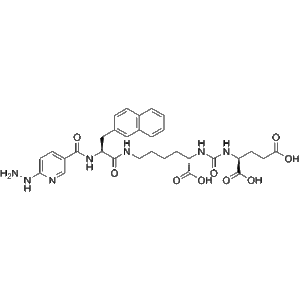
Side Effects (For Research Reference)
While HYNIC-iPSMA is for research use only, insights from preclinical and clinical imaging studies of PSMA-targeted tracers provide relevant context:
Renal Uptake: Radiolabeled PSMA ligands often show kidney accumulation, due to renal clearance mechanisms.
Salivary and Lacrimal Gland Uptake: These glands express PSMA at low levels, potentially leading to off-target signal.
Potential Background Activity: Non-tumor tissues with baseline PSMA activity may produce mild signal interference.
Radiation-Related Risks: Depending on isotope used, radiation exposure requires handling precautions.
Research Safety Considerations
Use under CMGP (Customized Manufacturing Good Practice) laboratory standards.
Employ shielding and dosimetry when working with radiolabeled isotopes.
Consider biological distribution studies to minimize non-target organ exposure.
Importance for Translational Studies
Understanding the side effect and biodistribution profiles of PSMA ligands is essential for optimizing tracer design. HYNIC-iPSMA research allows scientists to refine radionuclide dosing, targeting strategies, and develop safer, more effective imaging agents for oncology.
Disclaimer
For research use only. Not for human or veterinary use. Handle under CMGP (Customized Manufacturing Good Practice) laboratory standards with appropriate radiation safety protocols.
Keywords
HYNIC-iPSMA CAS 2192215-74-8, PSMA imaging ligand, prostate cancer PET tracer, 99mTc-HYNIC-iPSMA, 68Ga-iPSMA, PSMA-targeted molecular imaging, radionuclide-drug conjugate precursor, SPECT/PET oncology research.CGMP Peptide Suppliers
Additional information
| Weight | 0.8 kg |
|---|---|
| Dimensions | 53 × 43 × 53 cm |
What is HYNIC-iPSMA?
A molecular imaging ligand combining HYNIC (radiolabeling moiety) with iPSMA (PSMA inhibitor) for tumor targeting.
What is its CAS number?
2192215-74-8.
How does HYNIC-iPSMA work?
It binds to PSMA-expressing tumors and enables radiolabeling with isotopes such as 99mTc or 68Ga for PET/SPECT imaging.
What are its main applications?
Prostate cancer imaging, development of theranostics, and oncology research.
Which isotopes can be used?
Commonly 68Ga for PET and 99mTc for SPECT.
Why is PSMA important in cancer research?
It is highly expressed in prostate cancer and tumor vasculature, making it a strong biomarker.
Can HYNIC-iPSMA be used therapeutically?
No. It is strictly for laboratory research use.
What precautions are needed?
Radiation safety measures and CMGP standards must be followed.
What are potential side effects in research models?
Kidney uptake, salivary gland accumulation, and off-target signals.
Is it stable under storage?
Yes, when stored at -20°C protected from light and moisture.

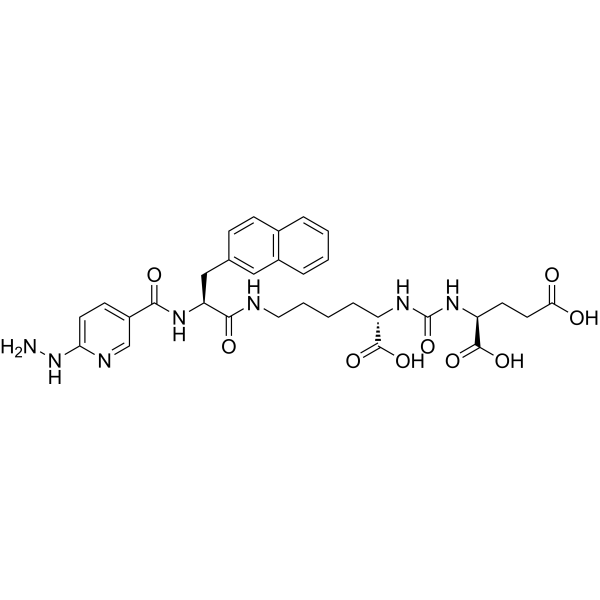

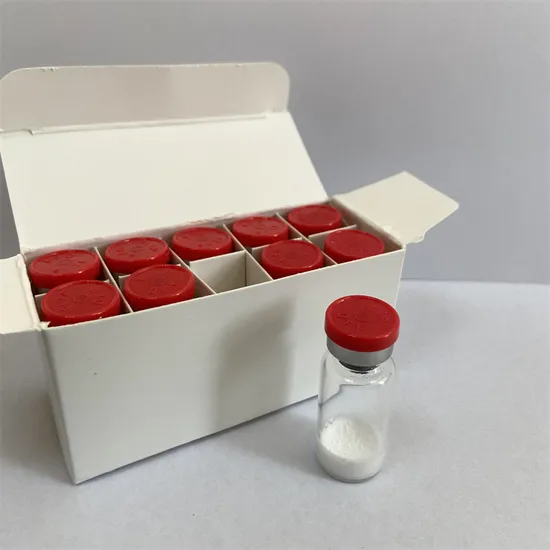
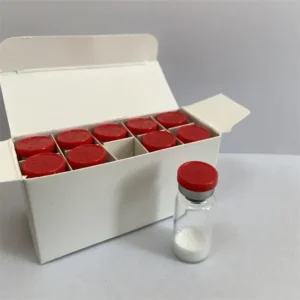

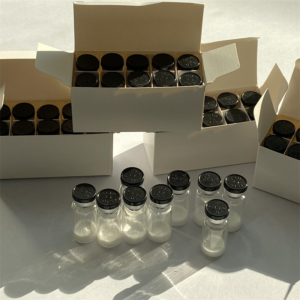
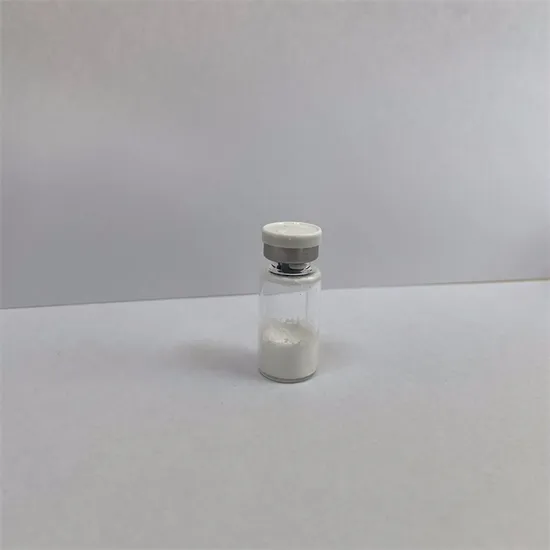
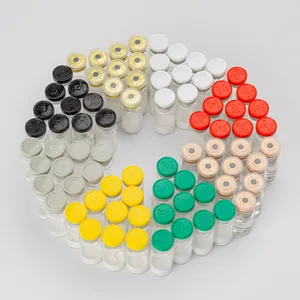

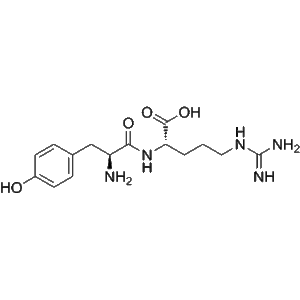
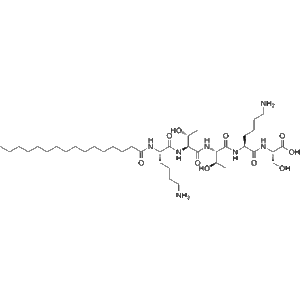
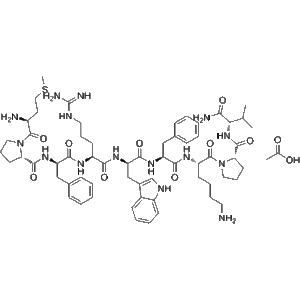
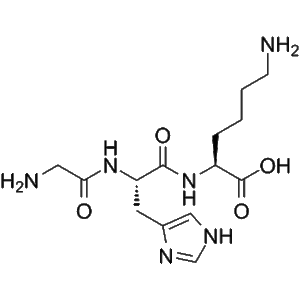
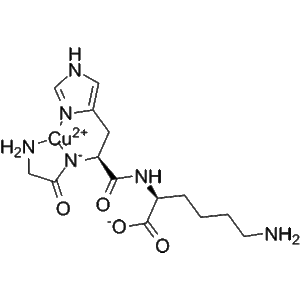
Reviews
There are no reviews yet.